
Old Shanghai feeling on today’s Nanjing lu
The 1920s and 30s was a period of intense building in Paris outer districts and in Paris close suburbs. Away from the grand building of Central Paris, buildings in suburbs tend to be a little smaller, with more space around. They are more similar to the ones of Shanghai former French Concession.
As a stopover before flying back to Shanghai, I spent a day in Asni`eres/Seine, a very close suburb to Paris. Asni`ere is familiar for French people, as French standup Fernand Raynaud (1926-19730) mentioned it in one of his most famous pieces, asking for phone number 22 in Asni“eres in the 1950 (see video below).
Like many cities in the Western part of Paris, it was built up before and after WWI, so Art Nouveau and Art Deco are plentiful. Another similar exemple is much more though after Boulogne-Billancourt (see post From Boulogne to Nanjing for more details). Walking around the city, I found a number of nice Art Deco examples.
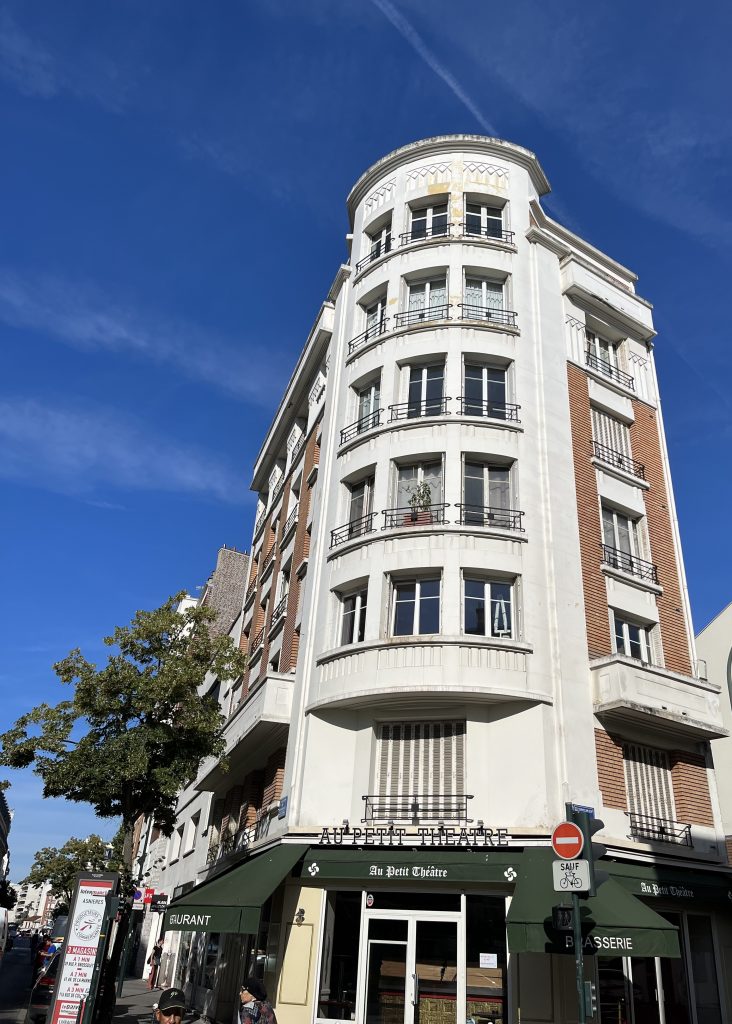
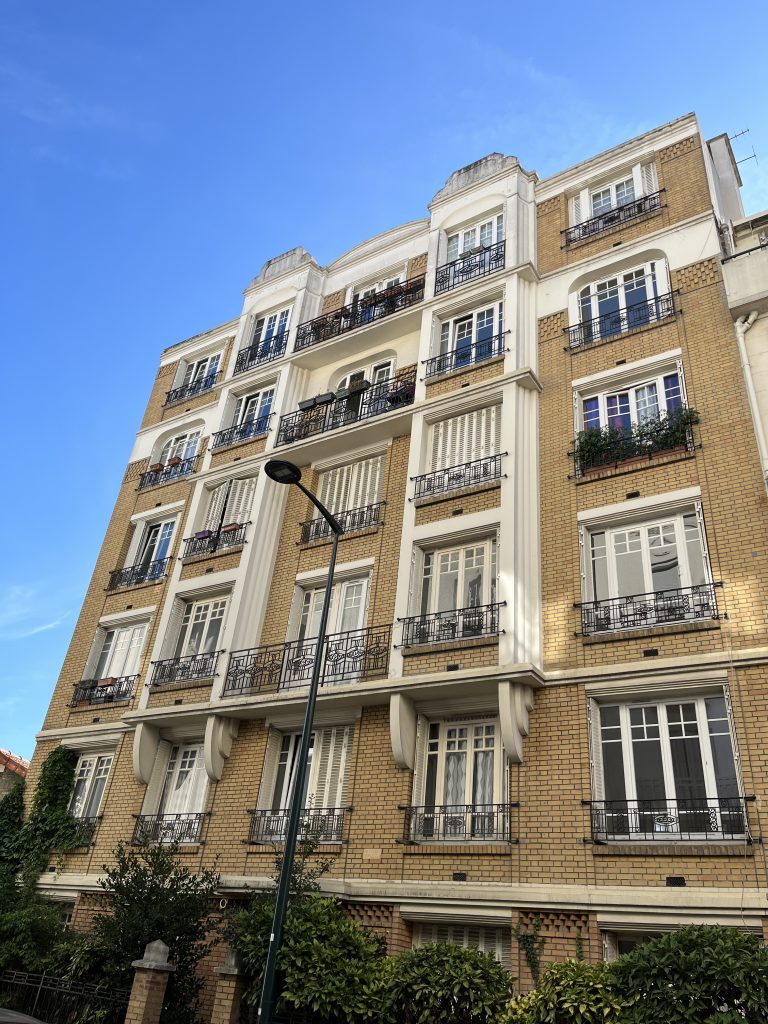
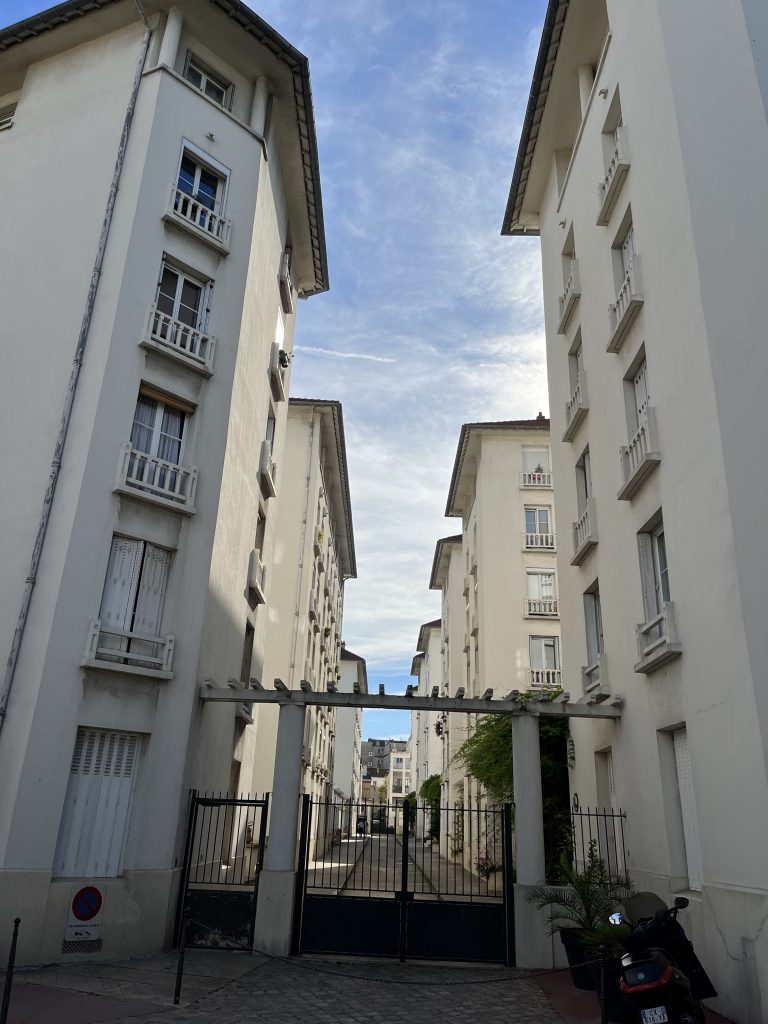
With such a sunny and hot weather, it felt even more like in Shanghai, surrounded by Art Deco buildings.
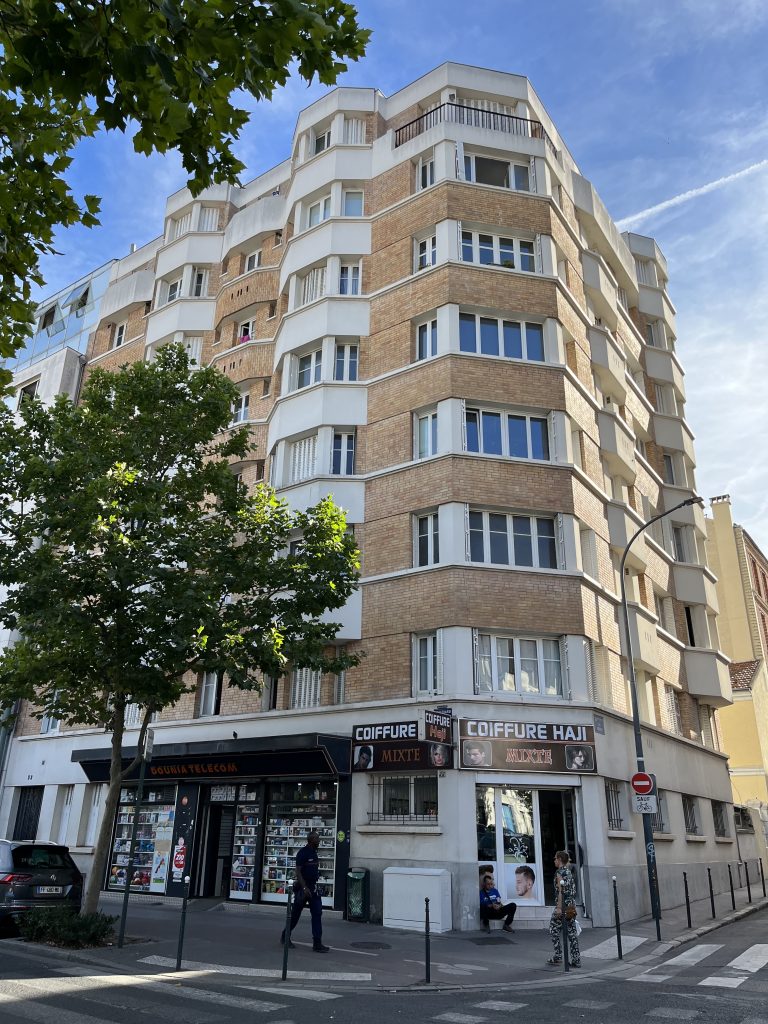
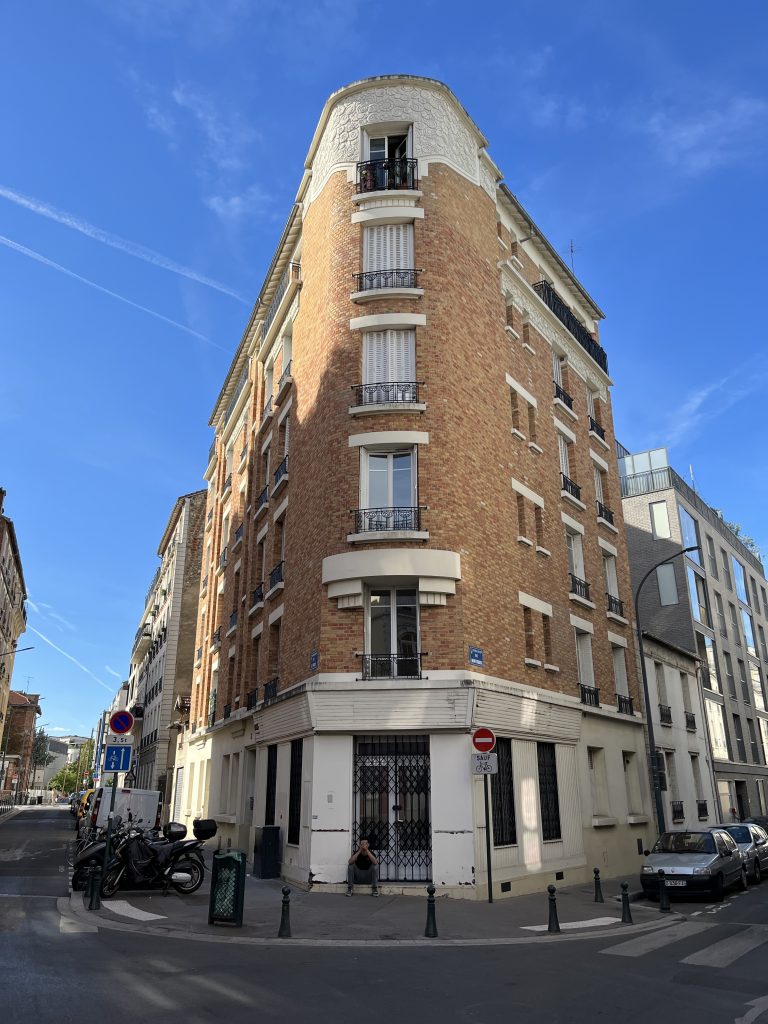
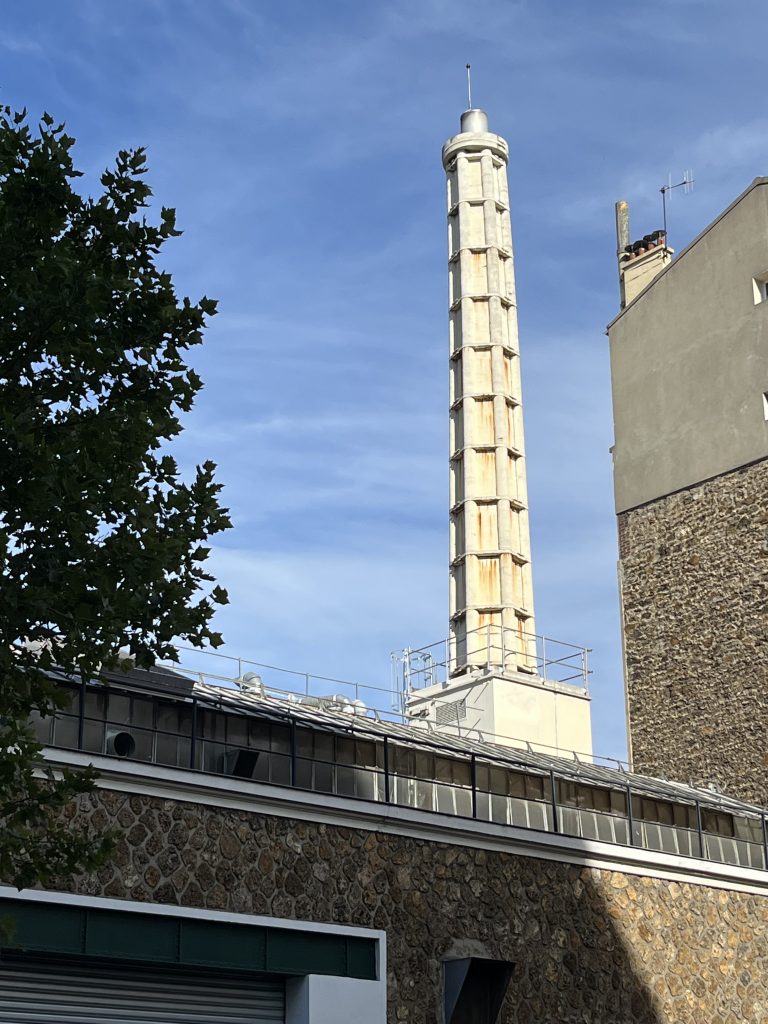
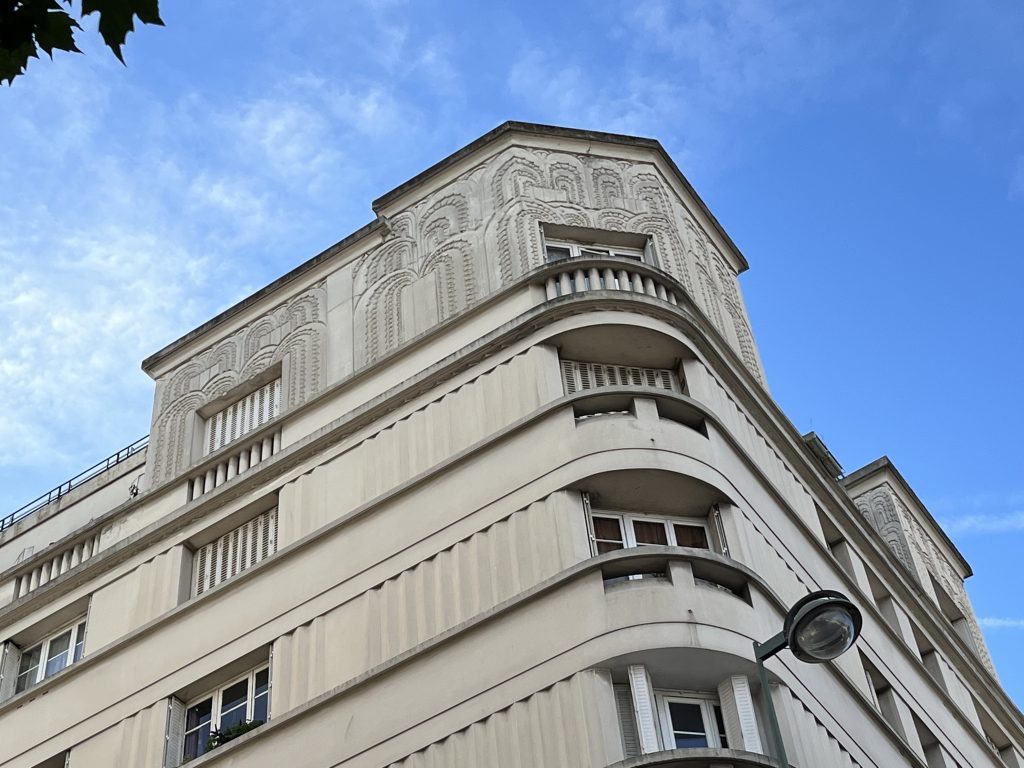
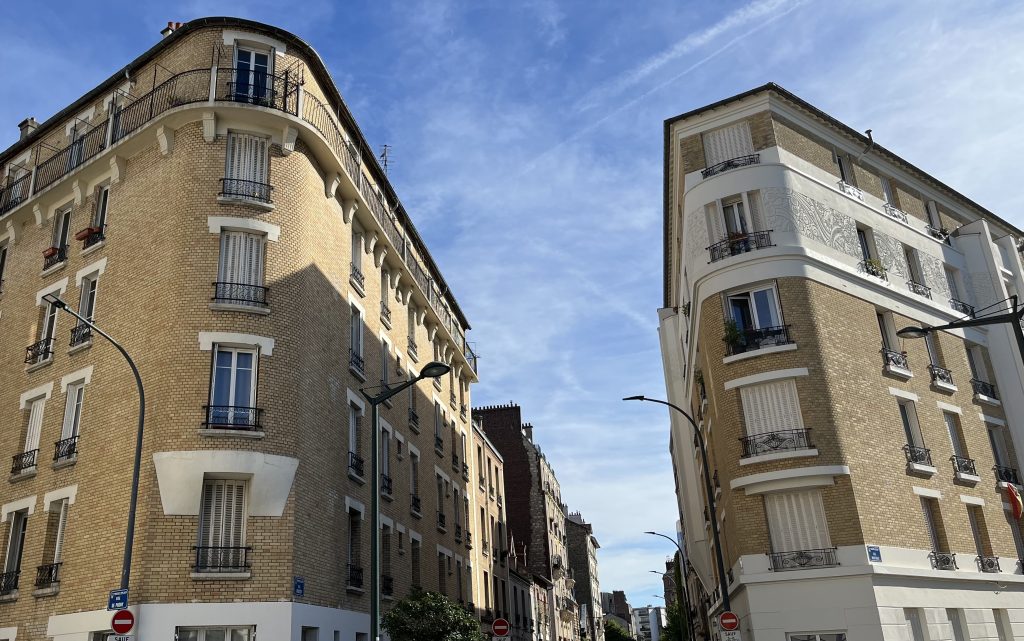
Travel books from the late 19th century are a good source of information about Shanghai at the time. However, the engraving that come with them are often wrong or invented. I recently receive the picture below, a extract from French review “Le tour du Monde” (around the World) from 1860. Unlike some others in the same review, this one seems pretty true to the original scene.
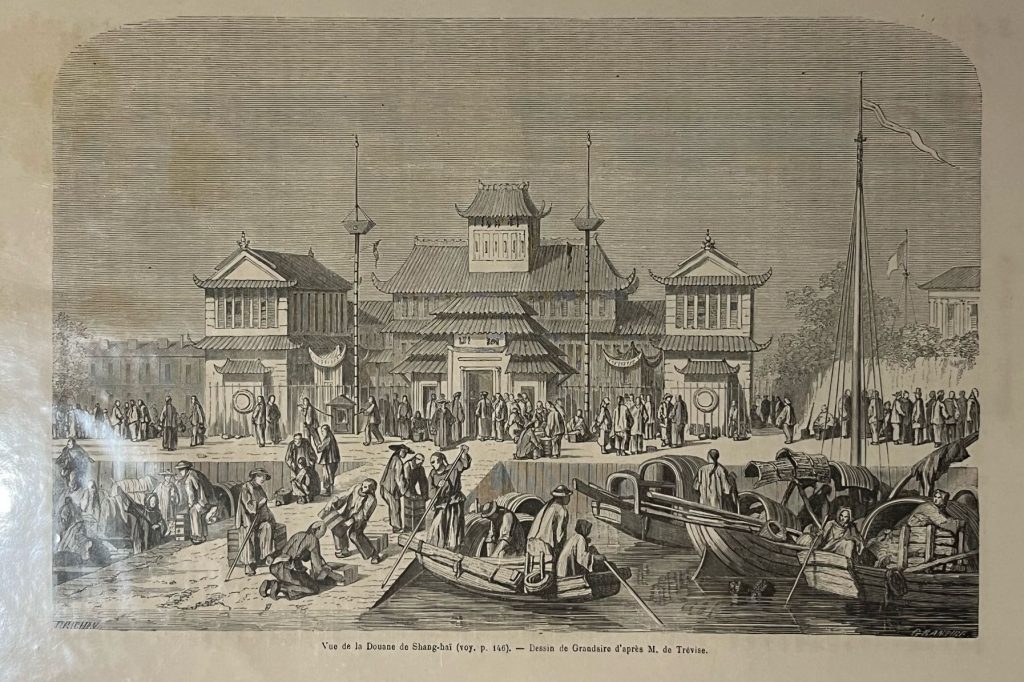
The above engraving was made from a painting from Pierre-Eug`ene Grandsire (1825-1905), a well known French painter. As the painter did not travel, it was made from a description or an earlier drawing from French marin officer M de Trévise. The picture must have been a great success, as it was later used for other publications in the UK.
Published in 1860, the picture is a reflection of 1858 or 1859. Control of the Chinese customs was handed to the British in 1854, and in 1857 the Shanghai authorities spent 6800 taels to built the customs office that was located on the Bund. From some sources, it seems that the building was originally a temple on the river side. The engraving is quite similar to the few pictures of the building that there taken later. The shape of the building was kept, though the actual proportions and size of the building is somewhat flawed.
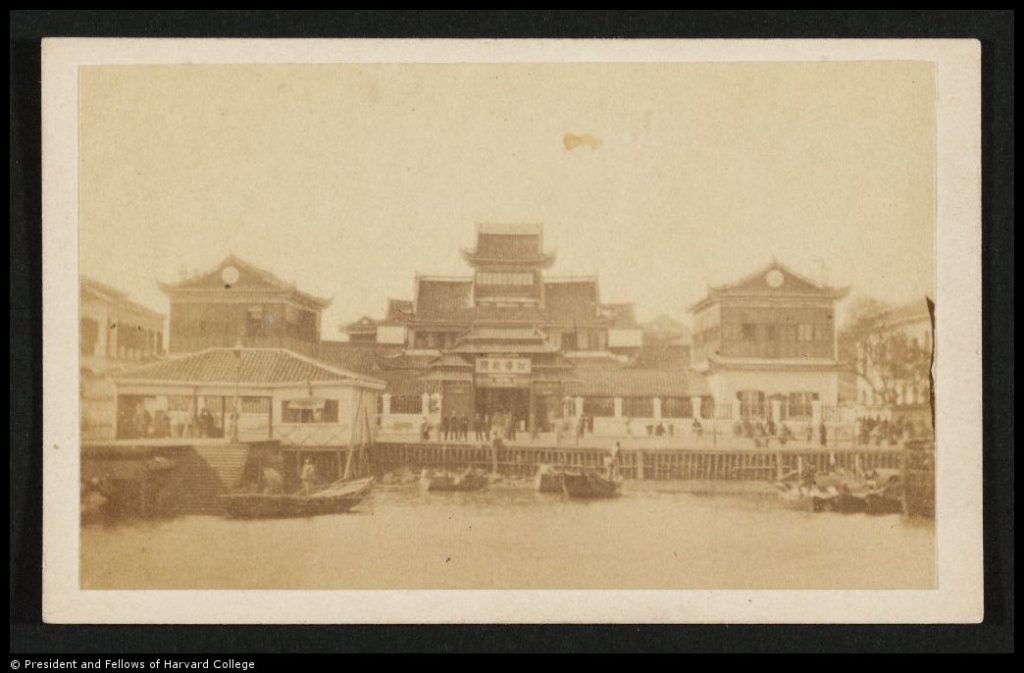
In 1893, it was replaced by a more western building, as seen below. That building was demolished in 1925 and replaced by the current customs house in 1927.
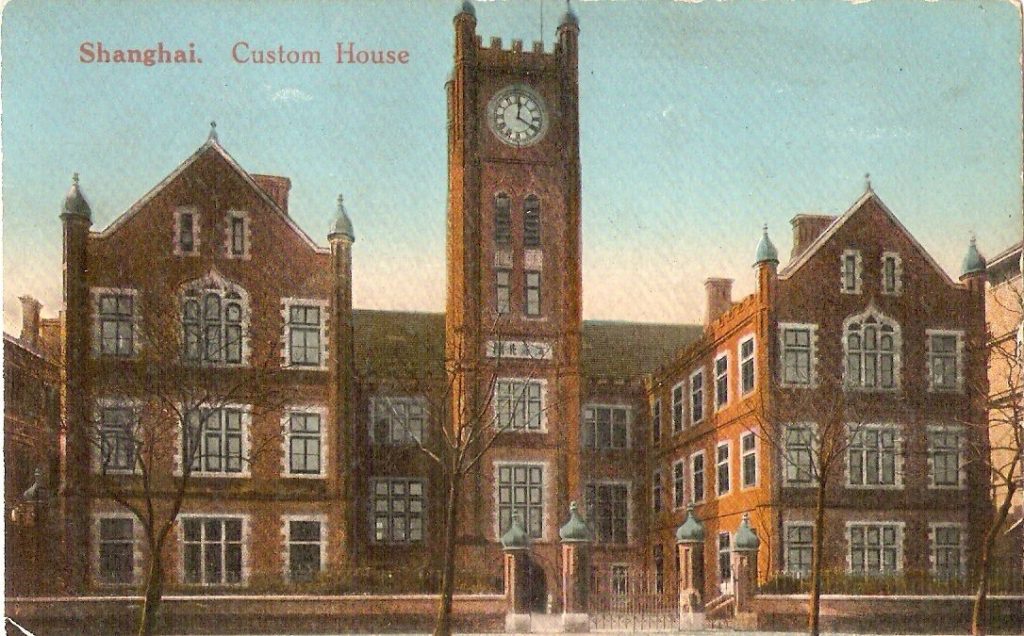
Thanks to his title, this particular has been coming up in my research about Old Shanghai for years. Having been disappointed by Old Shanghai novels a few times, it took a long time before I tried my luck on this one, which turned out to be quite a good read.
“Shanghai Club” is an historic novel written by a French China researcher. Only available in French, it take the reader through the life of French man Charles Espagnac, a former soldier who got involved in the destruction of Yuan Ming Yuan in 1860. Little is known of him until 10 years later, when he comes to Shanghai and create a transport trading company that will become one of the power houses in Shanghai trade.
When many Old Shanghai novels take place in the 1920s and 30s, the author choose to take us back in the late 19th century, when Shanghai was really a small trading outpost, far from being the gigantic city it later became. What makes the novel really standing out if the quality of the research and how is it applied in the novel. Actual historical events like the Taiping revolution, or the 1884 Sino French war are integrated in the narrative. The book also escapes feeling like a history lesson, while showing in the author’s in-depth knowledge of the topic.
Life in the tiny town that was Shanghai then and the relationship between the French concession and the international settlement as well as their citizens is also in line with actual historical research about the period. The author clearly have a strong experience and knowledge of China, making the Chinese characters of the novel very real. The best example is comprador Joseph Lui, a Chinese catholic that was the interface between Charles company and the Chinese World. Besides real history, invented characters and events fit well in the story and the period.
The plot of the novel is pretty thin, with only a few characters. It is far away from masterpieces like James Clavel’s Tai-Pan, but the book really does bring the reader in the early Old Shanghai atmosphere. As opposed to my favorite genre, this is not a crime novel, though crimes take place in the novel. The book is a great read, giving a soft history lesson about a period that is less covered, while keeping the reader entertained.
While writing this article, I discovered that the book has a sequel “La Reine du Yangzi”, that I will try to find and read.
After 2 years without foreign travel, I was able to get back to France. The trip included a short day in Lyon, with some Art Deco photo opportunities. This post follows another post about Lyon Art Deco from… 2012.
Lyon has a lot of Art Deco architecture (See one of the best sites on the topic… in French only). Unfortunately, I did not have so much time to visit it apart from walking around between business meetings, so I focused on the business district of Lyon 3rd district. The first stop was this beautiful building on Avenue Maréchal de Saxe, that features really of lot of the Art Deco ornaments.
Later I walked up Cours Lafayette, one of the main boulevard leading to Lyon Part-Dieu station. Bordering the 3rd and 6th district, that were developed in the 1920s and 1930s, it really goes trough Art Deco splendors in Lyon and is located very close to Palais de Flore, on the Art Deco Lyon icon.
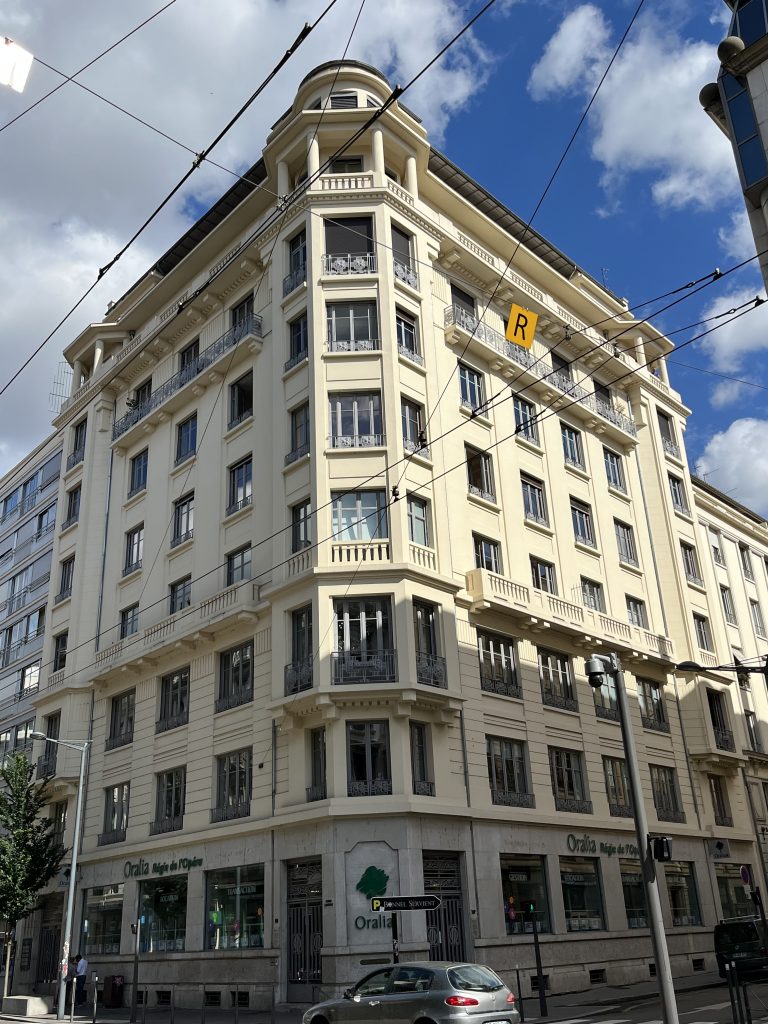
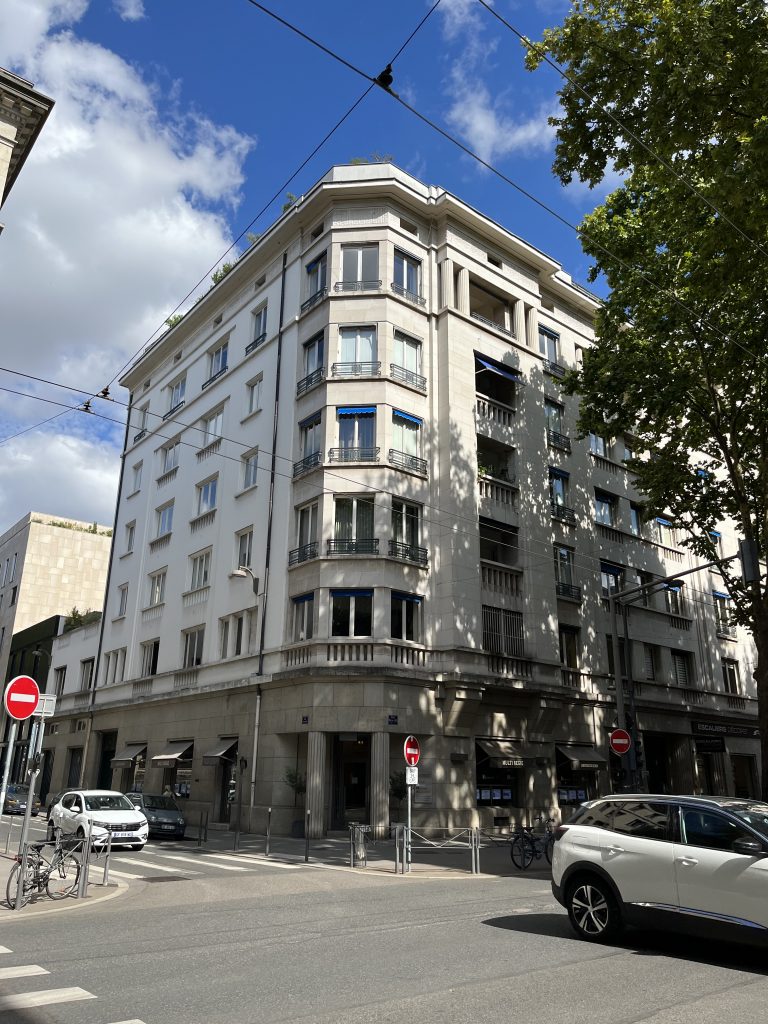
It was a really short view of Lyon Art Deco, but was a nice a sunny reminder of a style that is so present in Shanghai.
Art Deco was a major artistic movement in the 1920’s to 1940’s. Although it was overlooked for decades, attention has come back to it, first in the US, starting with Miami Beach, as well as in Australia and New Zealand (See post Napier Art Deco). In the last ten years, Art Deco has also come back to Europe, including France the original location of the 1925 exposition des Arts Decoratifs. Shanghai Art Deco was celebrated by the 2015 World Congress on Art Deco, with Paris being the location for the 2025 Word Congress, 100 years after the original exhibition.
The rediscovery of Old Shanghai was also a discovery of the Art Deco heritage of the city. As Old Shanghai buildings were uncovered (from add-ons in particular) or restored, they could be classified in various style, with the leading style being Art Deco. The next step was to realize that “unique” Shanghai buildings where unique in Shanghai, but very similar to some in far away places. For a while, I was travelling to various destination, looking for buildings that looked like the Shanghai own, often from the same period. The first post was probably “London recalling“, followed by many trips in Auckland, Sydney, New York, Miami, Paris, Lyon, Budapest, Dijon etc etc. The feeling of Deja Vu was summarized perfectly in ” Deja vu from Paris to Shanghai “, as well as in post “Shanghai flashback“. Although I have reduced travelling for architecture in the last years, friends who lived in Shanghai started to send pictures to me. The latest example, is from Bucharest, from Old Shanghai specialist Peter Hibbard.

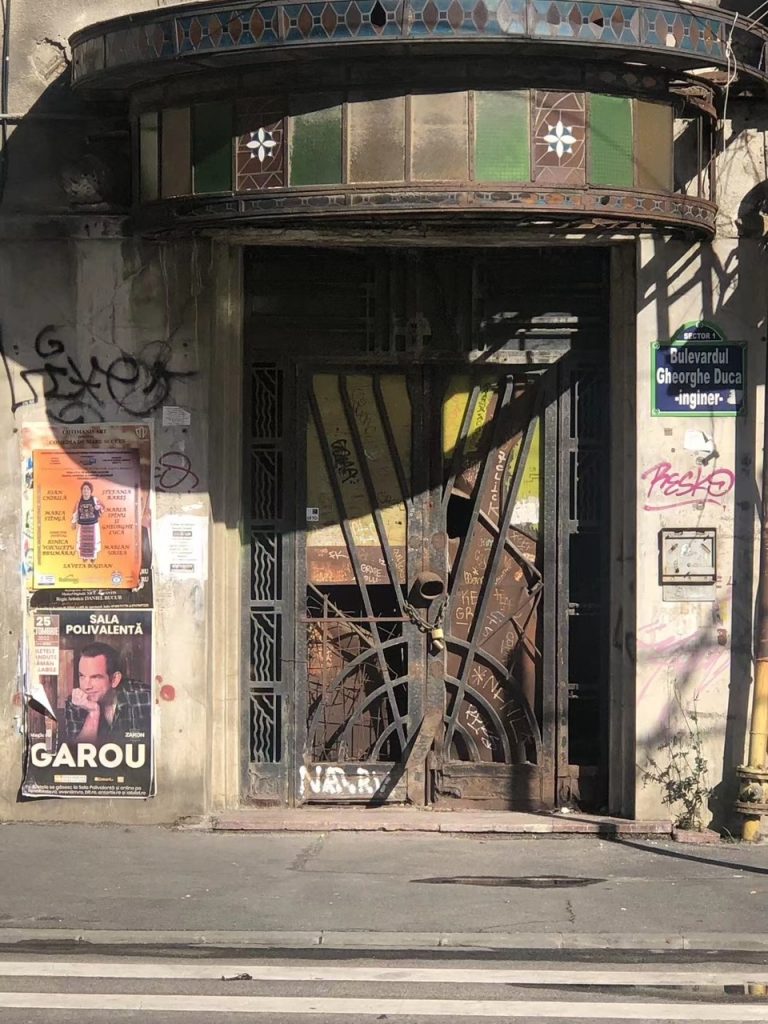

The above corner building could fit very well in the streets behind the Bund, or near Hamilton House, Grosvenor house or the corner of Avenue Edward VII and Szechuen Road (today Yanan Dong lu and Sichuan Lu). Just like building in Old Shanghai, and most communist countries, it was poorly maintained after WWI, but I am sure it was originally a very high class building.
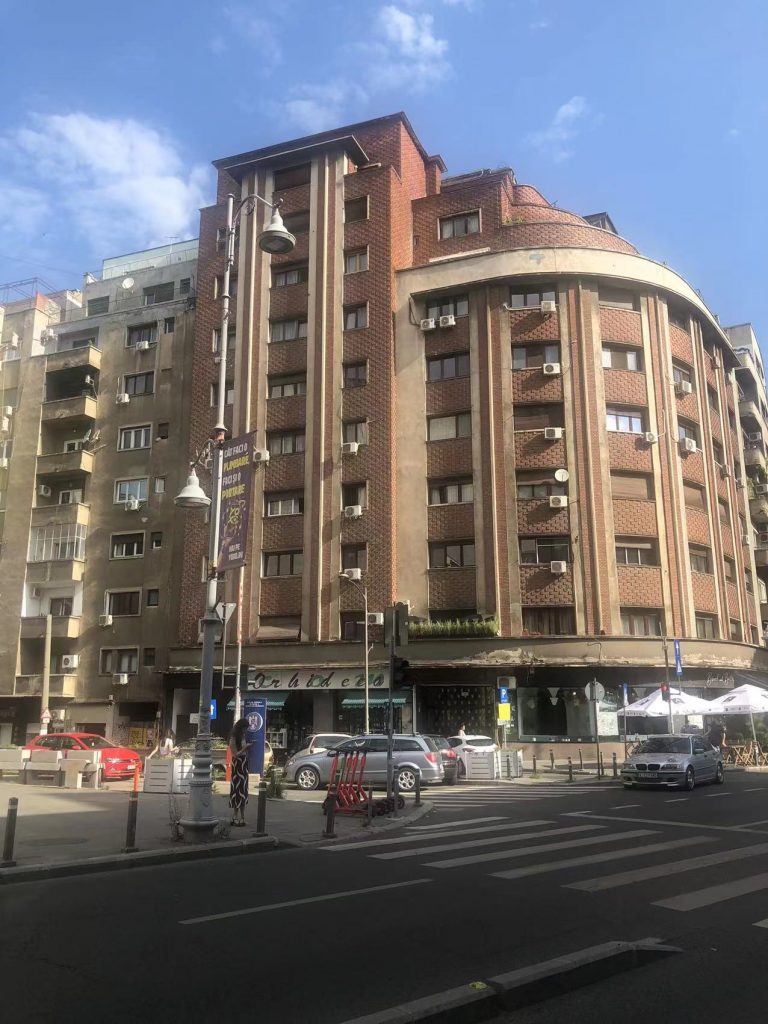
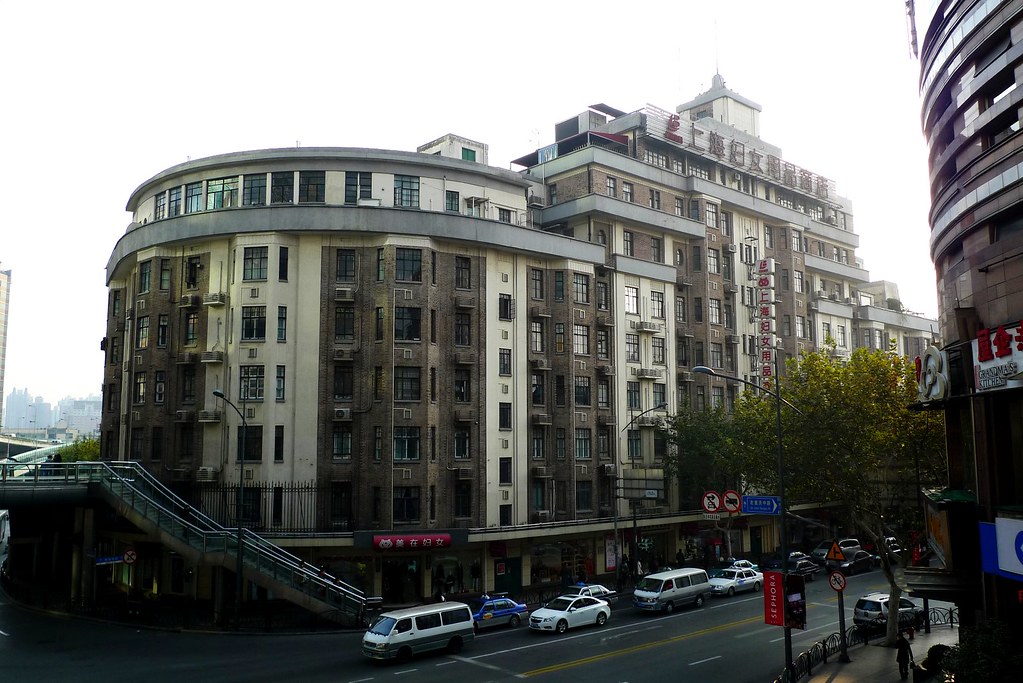
Another example of Art Deco / modernist similarities is the above corner building in Bucharest, that is quite similar to some in Shanghai, including the Bearn apartment building in Shanghai, buy French firm LVK.
The word of Gudao 孤岛(or isolated island) for Shanghai is usually associated with the 1937 to 1941 period. From the July 1937 to December 1941, both the International Settlement and the French Concession were surrounded by the Japanese army, but not occupied. Foreigners were still in control inside the concessions, but outside the population was ruled by the Japanese. Crossing in out the foreign settlements was difficult and dangerous, and population suffered. All people who lived through this period underline the strong feeling of isolation that people felt in Shanghai at the time. Supply was far from secure and many people died of hunger in city’s streets. Most of all, the city and it inhabitants were totally isolated from the rest of China.
After years of studying Shanghai history, I never thought that I would live through a period of time that is so similar. The last 2 years of CoVid epidemic have seen several periods when it was strongly recommended or sometimes forbidden to leave the city. As CoVid passed its second anniversary, it seemed that the epidemic was fading away… but it came back to the city with a vengeance. Although some districts started earlier, the lockdown started on 1st April on Puxi (4 days earlier in Pudong). It officially ended on 1st June, although some districts were still put under lockdown later on.
One of the strong reminder of the Gudao period, was that districts were separated from each other, with physical barriers being erected. Although the city’s administration has been largely changed since the late 1930s, some strong similarities remain. The most striking one for an Old Shanghai lover was surely the crossing point over the river on Szechuen Road (today Sichuan Lu).
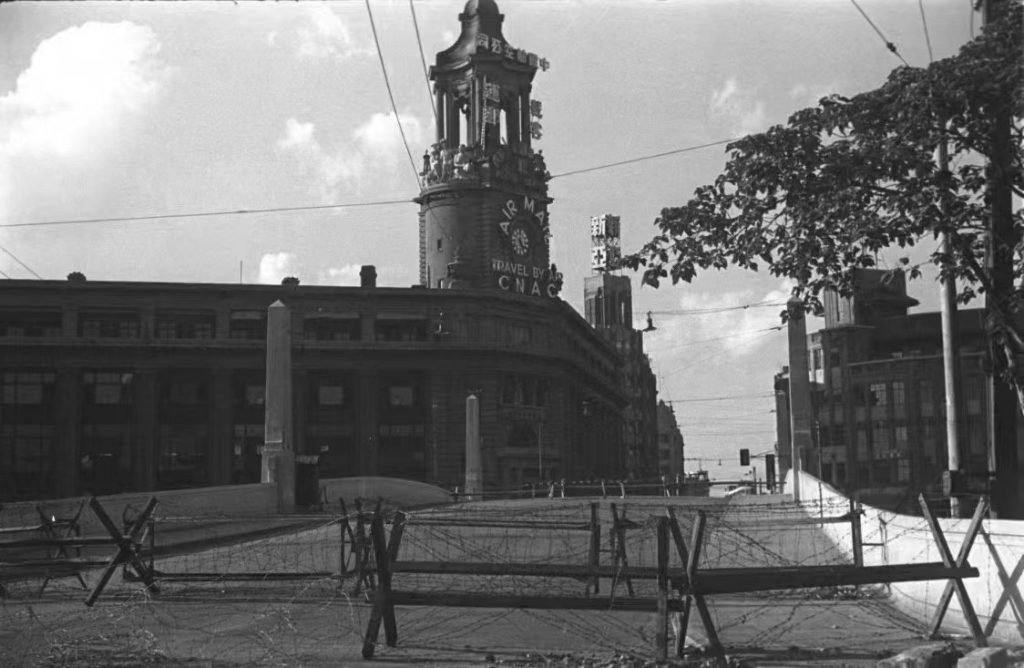
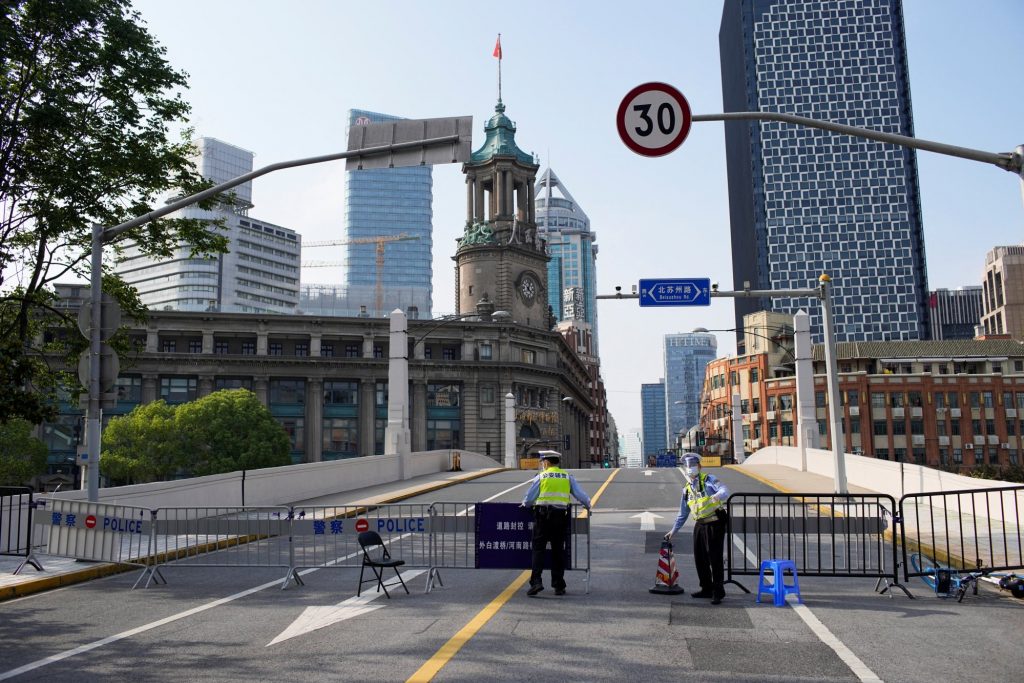
Besides the similar images, this lockdown also created similar feelings. In particular food in Shanghai was scarce in the early weeks of the lockdown, as logistics chains were heavily disrupted. Food supply was also a massive issue in the Gudao era.
Similarly, during the Gudao, inhabitants felt locked in this little strip of land and getting out was really difficult if not impossible. As similar sens of enclosure captured Shanghainese and foreigners alike. Many foreigners left if they could in the Gudao era, and very few came back in the year after the war. In a similar ways, many foreigners in Shanghai have already left or are considering doing it, even if the full lockdown is now lifted.
Life in Shanghai remains unsettled and the usual optimism and forward thinking of the city has been severely shaken. Hopefully the city vibe will come back in the coming months, and the city will surely be in full swing again by then.
爱情神话, in English “B for busy” is a recent Shanghai movie that has taken the city like a storm. This is a story of Shanghai people, taking place in the heart of Shanghai… in Shanghai dialect.

爱情神话 can be translated as “love myth”. The movie is a romantic comedy centered on Old Bai, a Shanghai man in his mid 40s. Divorced since years, he still looking for love and find himself the center of attention of three women. His Tango lover ex-wife is still around, and his own mother never accepted their divorce. One of his female student is also showing clear interest, though he is mostly some kind of distraction for her. Along comes a new friend that is attracting a lot of his attention. This trio of women makes a mess of his own little comfortable life, along with old friend Lao Wu, with his legendary past adventures with women.
The movie reminded me a lot of French movies, that are often centered around a couple of people in a short period of time. It studies the interaction between and how they change each character’s life. It also gives a sense of intimacy that really helps the viewer to relate with the movies characters. It’s a romantic comedy, and like in many French movies, the viewer will experience both laugh and sadness within short periods of times, making the movie very close to real life. Like many intimate French movies, it is depicting the life of the middle class, with cultural or artistic background.
Having lived in Shanghai for more than 18 years, I could also find a lot of reminders of my own life in Shanghai. All characters speak Shanghai dialect and characters are a real reflection of Shanghai life, including food and habits. All exteriors have been filmed in the streets of the Former French Concession, where a lot of Shanghai people in their midlife have spent their childhood in, just like characters of the movie. Walking down one of those streets, I am half expecting to meet the movies characters along the way. The whole movie actually feels like a love letter to life in this city.
The combination of strong Shanghai feeling and close intimacy with the characters is surely what has made the success of the movie in Shanghai. At the same time, it is also attracting foreigners who live in the city, as it gives all of us a sense of proximity and belonging. .. thanks to the English subtitles in the theater version. Hopefully, this will also make successful abroad as well, showing a very human face of Shanghai to the World.
Update 2024: The new series “繁花 / Shanghai blossoms” in Shanghainese is the new pride for Shanghai people.
After discovering Hugh Martin’s grave in Shanghai and finding out that he is actually not buried there, here are some more information about this interesting Old Shanghai character, thanks to Simon Drakeford from treatyportsport.com
Hugh Martin was the son of a famous theologian from Scotland, Very Rev. Alexander Martin who was Principal of New College, Edinburgh 1918-1935 and one of the architects of the union of the United Free Church of Scotland and the Church of Scotland in 1929. Rev Alexandre Martin’s father was also called Hugh Martin (1822-1885) and was also a theologian from Scotland and his own father was called Alexander Martin. It is probably not a coincidence that young Martin born in 1888, 3 years after his grandfather death in 1885 was called Hugh.
Hugh Martin got married in 1920 in Shanghai, to Margaret Thomas, after returning from WW1 in Europe. He was then a “Bachelor”, i.e. single and she was a “Spinster” meaning a lady single.

After spending the 1920s and 1930s being a socialite and ascending to full control of firm Noel, Murray and Co Ltd (瑞和洋行 in Chinese) as explained in previous post, it must have been really hard to be interned by the Japanese authorities along with citizens of allied in nations in 1943. This story has been well illustrated in Steven Spielberg’s movie, Empire of the Sun. It was also detailed in 2017 interview of Betty Barr for Chinese media Sixth Tone. Hugh Martin was interned in Pootung Camp in 1943, liberated in 1945. In the same year, he joined back the Shanghai Club and was elected Chairman.
It is not clear what happened to his first wife, but Simon found a summary document of Consular marriages (1946 – 1950) which shows that Hugh Martin married Anne M Laessoe in Shanghai. Interestingly, she was also in Pootung camp but married to Christian Frederick Laessoe who is listed as marrying a Marie Konovalova also in the period 1946 – 1950. Hugh and Anne Marie probably met in the camp.
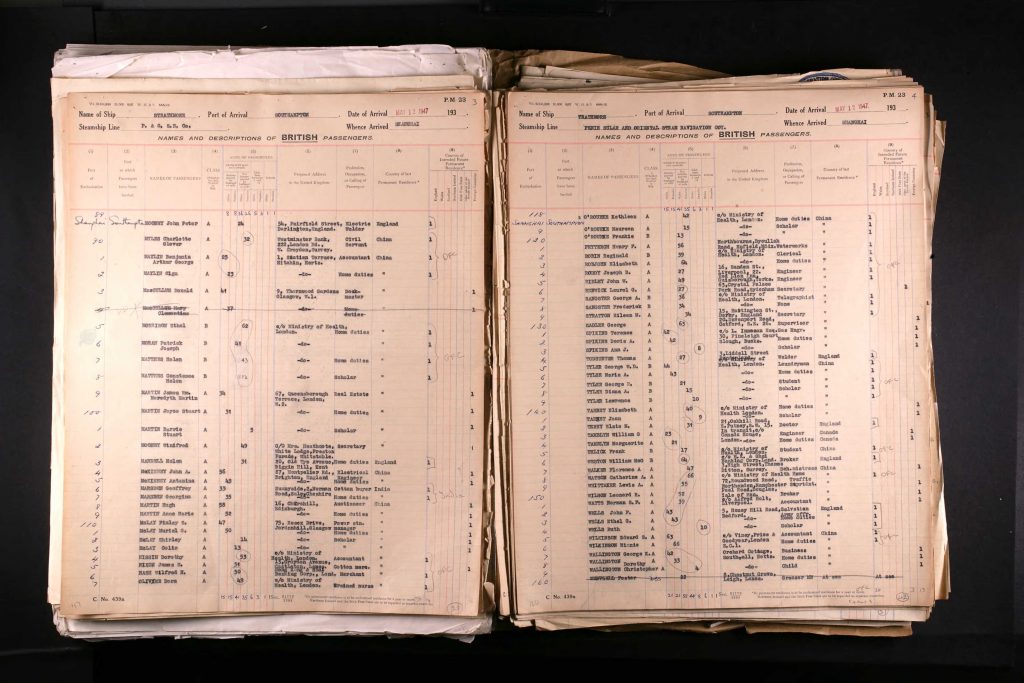
Hugh Martin landed back in Southhampton via British P&O ship Strathmore on 12th May 1947 as show on above document, one year after his own father’s death. In the document, Martin is mentioned as an auctioneer. With him came his wife, Anne Marie Martin, listed as “Home duties”. They were due to Edinburgh, adresse 16 Church Hill (Church Hill is a street and an area of Edinburgh).
Hugh Martin died in Edinburgh on 6 January 1970, not in London as mentioned in previous article. His wife must have passed away before him as he is mentioned as a widower. He was cremated in the following days.
Next post about Hugh Martin in Shanghai is “Letter from Hugh Martin“. If you have not read the earlier posts about Hugh Martin life in Shanghai, please go to first post “Hugh Martin’s grave in Shanghai“.
Michelle Garnaut’s place, M on the Bund, was the original Bund’s renaissance restaurant. Open in 2002, it was then the only high level independent restaurant on the Bund. A staple of Shanghai nightlife as well as one of the most Old Shanghai evocative place in the city, the restaurant has announced in closure for 15th February 2022. With its unique style mixing modernity and old colonial atmosphere, it has been one of the top spot for Old Shanghai lovers and will be sadly missed.
Located in the former NKK Building, on Bund N5 at the Cross of Canton Road (Guangdong lu) and the Bund, M on the Bund occupies the top floor, including the small but really nice terrasse. Besides the location in the heart of Old Shanghai’s Bund, the whole decor and atmosphere feels like high class dining in Old Shanghai.
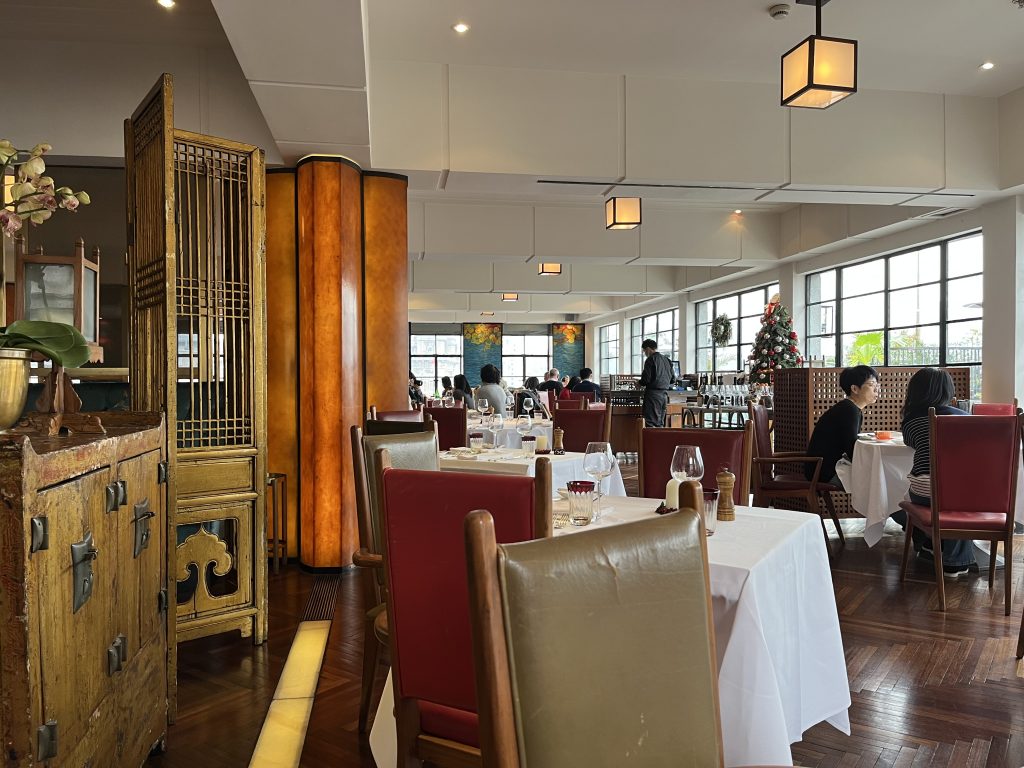
Lunch at M
Furniture, accessories and decor have been carefully curated to carry the real sense of class, sophistication and timelessness that makes great places. Staff has been trained and retained for years, creating a service level that is both very effective and nearly invisible. M’s brunch is still a favorite, along with its legendary Pavlova, but M on the Bund has been far more than a restaurant.
Michel Garnaut has been instrumental to bring culture to Shanghai, a place that was so much lacking of it. M was the main organiser and location of the now defunct Shanghai Literary Festival (See 2007 post “Quelques grammes de culture dans un monde de brutes“). The Glamour Bar (see post from 2009 “An old favorite the Glamour Bar“), was the place to present books about Old Shanghai in a timeless atmosphere. Many book reviews in this blog started with such a Saturday afternoon event or a lunch presentation at the Literary festival. My most vivid memory of those times is a presentation by the three ladies of Old Shanghai, Tess Johnston, Lynn Pan and Rena Krasno, probably around 2008. Since M on the Bund will close down in mid Feb, it’s the right to pay a last visit and enjoy the unique atmosphere of this legendary place.
Unfortunately, M on the Bund was not the only foreign place to close this winter. Famous Shanghai franchise Element Fresh, French veteran Le Café des stagiaires as well as Wine bar and terrasse favorite Kartel have already closed down in the last weeks.